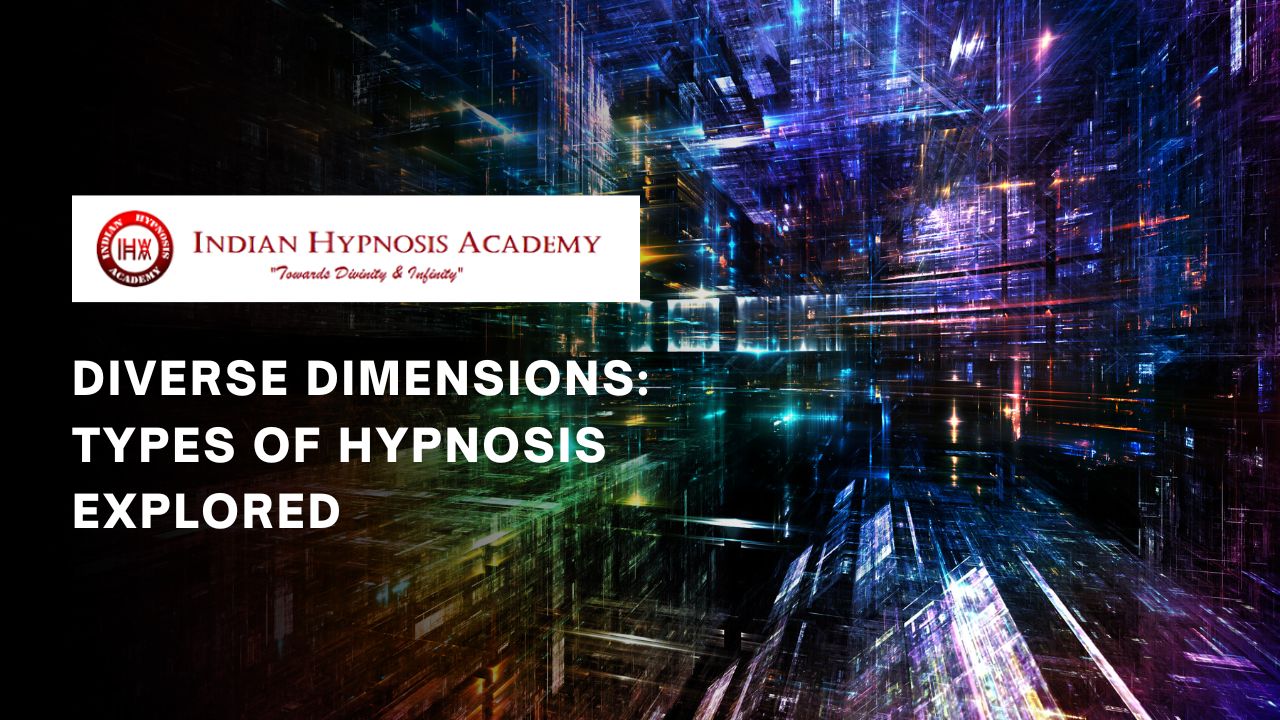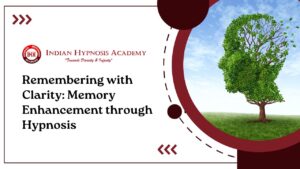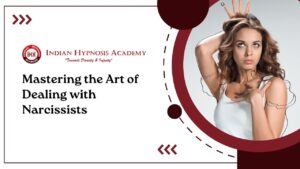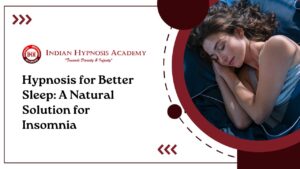Introduction to Hypnosis
Welcome to the fascinating world of hypnosis! Have you ever wondered about the power of the mind and its ability to shape our thoughts, behaviors, and even physical sensations? Well, that’s precisely what hypnosis aims to explore. In this blog post, we will dive into the diverse dimensions of hypnosis and discover its various types.
From ancient healing practices to modern therapeutic techniques, hypnosis has captivated minds for centuries. Whether you’re curious about traditional methods or intrigued by cutting-edge approaches like Ericksonian and Neuro-Linguistic Programming (NLP), we’ve got you covered!
So sit back, relax, and prepare to embark on a journey through the captivating realm of hypnosis. Let’s unravel the different types, explore their techniques and benefits, debunk some misconceptions along the way, and ultimately help you choose which type resonates with your unique needs. Get ready to unlock the hidden potential within your own mind!
The Three Types of Hypnosis: Traditional, Ericksonian, and Neuro-Linguistic Programming (NLP)
The world of hypnosis is vast and diverse, offering different approaches to tap into the power of the subconscious mind. Three popular types of hypnosis that have gained recognition are Traditional Hypnosis, Ericksonian Hypnosis, and Neuro-Linguistic Programming (NLP). Each type brings its unique techniques and benefits to help individuals achieve their goals.
Traditional Hypnosis, often known as “direct suggestion” or “authoritarian” hypnosis, involves inducing a trance-like state through relaxation techniques. The hypnotist then delivers direct suggestions to the subconscious mind, aiming to reprogram negative beliefs or habits.
Ericksonian Hypnosis takes a more indirect approach. Named after renowned psychiatrist Milton H. Erickson, this type focuses on storytelling and metaphors to bypass resistance in the conscious mind. By engaging the creative imagination of individuals, Ericksonian hypnotherapy facilitates positive change at a deeper level.
Neuro-Linguistic Programming (NLP) combines aspects of psychology, linguistics, and neurology to explore how language patterns influence our thoughts and behaviors. NLP practitioners use various techniques like anchoring and reframing to help clients reframe limiting beliefs and achieve personal transformation.
Each type offers distinct advantages based on individual preferences and needs. Traditional hypnosis may be suitable for those seeking direct guidance for specific issues such as smoking cessation or weight loss. Ericksonian hypnotherapy appeals to individuals who respond better to storytelling or prefer a less authoritative approach. NLP attracts those interested in exploring language patterns’ impact on their mindset and behavior.
Techniques Used in Each Type of Hypnosis
Traditional hypnosis, also known as direct suggestion hypnosis, is perhaps the most widely recognized form of hypnotherapy. It involves inducing a trance-like state by using repetitive and authoritative suggestions to access the subconscious mind. The therapist guides the client into a deep state of relaxation and then delivers specific commands or affirmations to help them achieve their desired outcomes.
On the other hand, Ericksonian hypnosis takes a more indirect approach. Named after renowned psychiatrist Milton H. Erickson, this type of hypnosis relies on storytelling, metaphors, and confusion techniques to bypass conscious resistance and communicate directly with the unconscious mind. By employing language patterns that are subtle yet powerful, Ericksonian therapists can evoke significant positive changes in their clients’ thoughts, feelings, and behaviors.
Neuro-Linguistic Programming (NLP) utilizes a combination of language patterns and visualizations to bring about transformational change. NLP practitioners believe that our subjective experiences are shaped by our internal representations – how we perceive information through our senses. Through various techniques such as anchoring (associating an emotional state with a specific trigger), reframing (changing one’s perspective on an issue), and modeling (emulating successful behaviors), NLP aims to reprogram faulty beliefs and habits for personal development.
Each type of hypnosis has its own unique set of techniques tailored towards achieving specific goals. While traditional hypnosis focuses on direct suggestions for behavioral change, Ericksonian uses indirect methods like storytelling to tap into the subconscious mind’s resources. In contrast, NLP emphasizes linguistic tools to reframe perceptions and model success.
It’s worth noting that these techniques should only be practiced by trained professionals who have undergone extensive training in therapeutic modalities like psychology or counseling alongside specialized knowledge in each respective field.
Benefits and Applications of Each Type
Traditional hypnosis, also known as direct suggestion or authoritarian hypnosis, is the most widely recognized form of hypnosis. It involves a hypnotist guiding the subject into a relaxed state and then providing direct suggestions to bring about desired changes in behavior or mindset. This type of hypnosis is commonly used for smoking cessation, weight loss, stress reduction, and overcoming phobias.
Ericksonian hypnosis takes a more indirect approach. Named after renowned psychiatrist Milton H. Erickson, this type of hypnosis utilizes storytelling and metaphor to bypass the conscious mind and access the subconscious. It can be particularly effective for addressing deep-rooted emotional issues, building self-confidence, enhancing creativity, and improving communication skills.
Neuro-Linguistic Programming (NLP) combines elements of psychology, linguistics, and behavioral patterns to explore how our thoughts affect our behaviors. NLP techniques are often used in therapy sessions to help individuals overcome limiting beliefs or negative thought patterns. NLP can also be useful for improving performance in sports or business settings by tapping into one’s full potential.
The benefits of traditional hypnosis lie in its simplicity and effectiveness for specific issues that can be directly addressed through suggestions. Ericksonian hypnotherapy offers a more subtle approach that allows for deeper exploration of underlying emotions and beliefs that may be hindering personal growth.
NLP brings an analytical element to the table with its focus on language patterns and cognitive processes. By understanding how we think and communicate with ourselves internally (neuro) as well as externally (linguistic), we can reframe our thoughts to achieve positive outcomes.
Each type has unique applications depending on individual needs—traditional hypnosis may work best when targeting specific habits or phobias; Ericksonian methods shine when exploring complex emotional challenges; while NLP provides tools for personal development across various areas of life.
Misconceptions about Hypnosis
Hypnosis has always been a topic that is shrouded in mystery and misconception. Many people have preconceived notions about what hypnosis is and how it works, often based on what they have seen in movies or on television. Let’s debunk some of these common misconceptions and shed light on the reality of hypnosis.
One common misconception is that hypnosis is mind control or manipulation. In reality, hypnosis is a state of focused attention where the individual remains in complete control of their thoughts and actions. The hypnotist simply guides them into a relaxed and receptive state, allowing for suggestions to be more readily accepted.
Another misconception is that only weak-minded individuals can be hypnotized. This couldn’t be further from the truth! In fact, anyone with an open mind and willingness to participate can experience the benefits of hypnosis. It has nothing to do with intelligence or strength of will.
There’s also a belief that during hypnosis, you will lose all awareness or memory of what occurred. While it is true that deep levels of trance can result in temporary amnesia, most people remember everything that happens during a hypnotic session. It’s similar to being engrossed in a good book or movie – you’re fully aware but deeply absorbed.
Some people fear that they will reveal their deepest secrets under hypnosis, but this fear is unfounded as well. Hypnotists are bound by ethical guidelines which prioritize client confidentiality and respect for privacy.
There’s often skepticism regarding the effectiveness of hypnotherapy for certain issues such as quitting smoking or managing anxiety. However, numerous studies have proven its efficacy in aiding behavior change and improving overall well-being.
It’s important to separate fact from fiction when it comes to understanding hypnosis. By dispelling these misconceptions, we can embrace the power of this therapeutic tool and explore its potential for personal growth and transformation without hesitation.
Choosing the Right Type of Hypnosis for You
With the diverse dimensions of hypnosis available, it’s important to choose the right type that aligns with your individual needs and preferences. Each type offers unique techniques and approaches, making it crucial to consider what resonates with you.
Traditional hypnosis, also known as direct suggestion hypnosis, is a popular choice for those seeking a straightforward approach. This type involves inducing a trance-like state through repetitive suggestions that target specific behaviors or habits. It can be effective in treating issues such as smoking cessation or weight management.
On the other hand, Ericksonian hypnosis takes a more indirect and conversational approach. Named after renowned psychiatrist Milton H. Erickson, this type utilizes storytelling and metaphors to communicate with the subconscious mind. It is often used for therapeutic purposes such as anxiety reduction or enhancing self-confidence.
Neuro-Linguistic Programming (NLP) combines elements of psychology, linguistics, and programming to create powerful change in individuals. NLP practitioners focus on understanding how language patterns influence our thoughts and behavior. This type of hypnosis can be beneficial for personal development goals like improving communication skills or overcoming phobias.
When choosing the right type of hypnosis for you, consider factors such as your desired outcome, comfort level with different techniques, and compatibility with the practitioner’s style. Some people may find traditional methods more appealing due to their straightforward nature, while others may resonate better with indirect approaches like Ericksonian or NLP.
Conclusion: Exploring the Power of the Mind through Different Dimensions of Hypnosis
In this article, we have delved into the fascinating world of hypnosis and its various dimensions. From traditional hypnosis to Ericksonian and Neuro-Linguistic Programming (NLP), each type offers unique techniques and benefits.
Traditional hypnosis relies on direct suggestions to help individuals reach a deep state of relaxation and tap into their subconscious minds. This approach has been used for decades to address issues such as smoking cessation, weight loss, anxiety reduction, and performance enhancement.
On the other hand, Ericksonian hypnosis takes a more indirect approach by utilizing storytelling, metaphors, and embedded commands. This technique allows for greater flexibility in tailoring sessions to individual needs while bypassing resistance or skepticism.
Neuro-Linguistic Programming (NLP) combines language patterns with visualization techniques to reprogram thought processes and behaviors. NLP practitioners focus on understanding how individuals process information internally and use this knowledge to facilitate personal growth and transformation.
Each type of hypnosis offers its own set of benefits and applications depending on your specific goals. Whether you’re seeking self-improvement or professional development, there is a dimension of hypnotherapy that can support your journey towards positive change.
It’s important to note that despite popular misconceptions surrounding hypnosis – such as loss of control or manipulation – it is ultimately a voluntary experience where you remain fully aware throughout the session. The power lies within your mind’s ability to tap into its inner resources under the guidance of a skilled practitioner.
When considering which type of hypnosis is right for you, take some time to research different approaches thoroughly. Consider reaching out directly to practitioners or attending introductory workshops before making your decision. Remember that finding an experienced professional who aligns with your goals will greatly enhance the effectiveness of your hypnotic experience.




